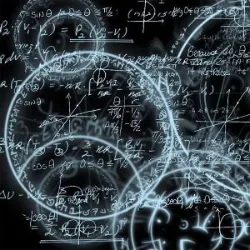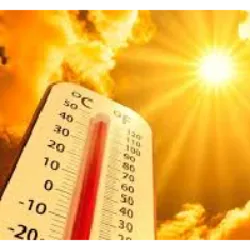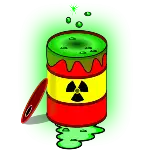Quantum Mechanics

Quantum Mechanics is the theory of physics that describes the behavior of particles on very small scales, such as atoms and subatomic particles. It introduces fundamental concepts such as:
Particle-Wave Duality: Particles can behave as either particles or waves, depending on the observation.
Energy Quantization: The energy of quantum systems is not continuous, but rather discretized into specific "blocks" or levels.
Wave Function: Describes the state of a particle and its location probabilities and other properties.
Heisenberg Uncertainty Principle: It is not possible to accurately measure both the position and momentum of a particle simultaneously.
Superposition and Collapse: Particles can exist in several states at the same time, but when observed, they "collapse" to a specific state.
Quantum Entanglement: Particles can correlate so that the state of one depends on the state of another, even at great distances.
Quantum mechanics is fundamental to several modern technologies, such as semiconductors, lasers and magnetic resonance, and opens doors to areas such as quantum computing and quantum cryptography.
In essence, quantum mechanics offers a probabilistic, non-deterministic view of reality at microscopic scales.
The art of pyrotechnics, dating back millennia

The art of pyrotechnics, dating back millennia, had its origins in ancient China, where natives threw pieces of green bamboo into bonfires during festivities to scare away evil spirits with loud sounds. Later, Chinese alchemists created gunpowder by mixing saltpeter, sulfur and charcoal, initially looking for an elixir of eternal life, but ended up using it in fireworks. This practice spread across Europe and the United States, becoming an integral part of celebrations. Originally orange, the fireworks acquired vibrant colors after the addition of metals by Italian inventors in 1830. The colors of the fireworks are determined by the compounds used, such as barium chloride for green, magnesium for silver, lithium for red and sodium for yellow.
Test yourself with one of these challenges 👇
Discover some interesting facts about Physics-Chemistry
Heat is a form of energy that

Heat is a form of energy that is transferred from one body to another when there is a difference in temperature between them, resulting in thermal equilibrium. The standard unit of measurement for heat is the Joule (J), although it is common to use calories (cal) for measurement. Heat and temperature are distinct concepts, with the first being energy and the second a measure of the agitation of particles in a body. Throughout history, the concept of heat has been debated by philosophers and scientists, from Aristotle to Lavoisier and Lord Kelvin, who established that heat is a form of energy. Heat can be transferred by conduction, convection and radiation, the latter being a propagation of electromagnetic waves that does not require a physical medium to occur, following the Steffan-Boltzmann Law, where the amount of heat emitted is proportional to the fourth power of the temperature of the body (Q α T^4).
Molar mass

Molar mass is a physical property that indicates the mass of a substance on a molecular scale. It is calculated by adding up the atomic masses of all the atoms present in a molecule or chemical formula. The unit of measurement for molar mass is grams per mole (g/mol). This unit indicates how many grams of a substance are present in 1 mole of that substance. For example, if the molar mass of a substance is 32 g/mol, that means that 1 mol of that substance weighs 32 grams. To calculate the molar mass of a substance, you need to know the atomic masses of the elements that make it up. The atomic mass of an element is found on the periodic table of elements. It represents the weighted average of the masses of the isotopes of that element.
Chemical radioactivity

Chemical radioactivity is a phenomenon in which unstable atoms emit subatomic particles or electromagnetic radiation to achieve greater nuclear stability. There are three main types of radiation: alpha particles, beta particles and gamma radiation.Alpha (α) particles: These are helium nuclei composed of two protons and two neutrons. They have a positive charge and limited penetration. Beta particles (β): These are high energy electrons or positrons. They have a lower charge and mass than alpha particles and have a greater penetration capacity. Gamma radiation (γ): It is a form of electromagnetic radiation without charge and mass. It is highly energetic and has the greatest penetrating ability. Radioactivity occurs in unstable atoms known as radioactive isotopes, which are transformed into more stable isotopes through radioactive decay. Alpha decay (α), Beta decay (β) and Gamma radiation emission (γ).
Organic chemistry is the branch of chemistry that studies organic compounds

Organic chemistry is the branch of chemistry that studies organic compounds, which contain carbon in their molecular structure. These compounds are present in nature and in synthetic products manufactured by humans. Organic chemistry focuses on the structure, properties, synthesis and reactivity of organic compounds. Structural formulas and functional groups are used to represent and identify the compounds. Topics covered include nomenclature, structure and properties, organic synthesis, reaction mechanisms and reactivity of functional groups. Organic chemistry is essential in many industrial sectors such as pharmaceuticals, polymers, food, energy and general chemicals. Its development contributes to society and science.
Stoichiometric calculations

Stoichiometric calculations are used in chemistry to determine amounts of substances in a chemical reaction. The basic steps include: Write the balanced chemical equation for the reaction. Identify the known amounts of substances involved in the reaction. Convert known amounts to moles, if necessary. Use the stoichiometric ratio of the balanced equation to perform ratio calculations. Calculate the unknown amount of the desired substance. It is important to consider the limiting reagent, which determines the maximum amount of product formed in the reaction. Stoichiometric calculations are useful for determining the amount of reactants needed, predicting the amount of products formed, and solving problems related to quantities in chemical reactions.
Test yourself with one of these challenges 👇
HOME














